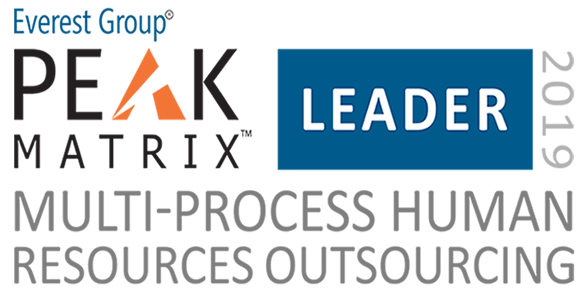The human resources technology market is filled with terminology – HRM, HCM and HRIS – that many in the industry use interchangeably. This can complicate the evaluation process for HR professionals and business owners who are new to managing people on a large scale. But by exploring what these terms mean and how they differ from each other, they may be better positioned to choose the right solution for their business.

What are HRM and HCM?
Human resource management (HRM) and human capital management (HCM) are methods of supporting daily HR operations and achieving longer-term, strategic goals. Thanks to advancements in technology, they have evolved from mostly administrative functions to critical enablers of business value.
What is HRM?
HRM is about hiring the right people, managing workforces effectively and optimizing productivity. As a software application, it typically includes the following features, depending on the provider:
- Payroll
- Benefits administration
- Time and attendance
- Recruitment
- Talent management
How does HCM work?
HCM uses software to meet the core needs of HR, including hiring, engaging, and retaining employees. Fully integrated solutions that unify HR functions can also eliminate costly redundancies and streamline data into a trusted source of decision-making for executives, HR practitioners, managers, and employees. As a result, businesses may be more capable of meeting challenges, such as:
- Evolving workforce demographics
- Growing numbers of contract-based workers
- Increasingly complex regulations
- Team-based work structures
HRM vs HCM – human resources vs human capital
The term human resources suggests something of limited quantity, whereas human capital implies an ongoing relationship of value. Semantics aside, there are some overlapping capabilities between HRM and HCM software, as well as a few key distinctions.
Similarities between HRM and HCM
Both HRM and HCM software are people-centric, data-powered solutions that can help define new workforce strategies and deploy them effectively. Other similarities between the two include the following features:
- Automation
Labor-intensive work, like payroll and timekeeping, are automated for better efficiency. - Integration
When core HR processes are integrated, it often improves the flow of information. - Self-service
Employees can complete tasks on their own, saving managers precious time. - Artificial intelligence
Chatbots and other forms of AI allow work to get done without human intervention. - Data security
Cloud-based solutions with multi-layered protection help mitigate threats. - Compliance monitoring
Local and global monitoring capabilities can help business stay on top of regulatory changes.
What is the difference between HRM and HCM?
HRM software provides core HR needs for small and mid-sized businesses. HCM solutions, on the other hand, cover a wider range of functions across the entire employee lifecycle and are designed to support the global compliance and international payroll needs of large enterprises. Advanced analytics, industry benchmark data and robust reporting are also typically included with HCM systems.
Choosing the right HR solution for your business
Choosing the right HR solution – whether it’s HRM or HCM – usually requires a careful examination of existing challenges and anticipated needs. This may seem like a daunting task, but by following these general steps, business owners and HR professionals can often simplify the evaluation process:
1. Identify problems
Common issues with outdated HR systems include complex workflows, high cost of ownership, inefficient processes and non-compliance.
2. Explore solutions
There are many HCM solutions with similar features on the market, but those that truly stand out tend to offer scalable technology, actionable data, personalized employee experiences and global capabilities.
3. Build requirements
Every business has different needs, but most look for systems that can help increase profitability, support strategic growth, attract and retain top talent, prevent security and compliance issues, and reduce burdens on IT resources.
4. Validate the selection
Measure each provider’s capabilities against the HCM requirements list and gather input from key stakeholders to ensure a smooth transition process.
Frequently asked questions about HRM and HCM
What is the difference between HRM and HRIS?
The key difference between HRIS and HRM is talent services. HRIS typically includes anywhere from one to five core HR functions – personnel tracking, payroll, benefits, time and attendance, and applicant tracking. When these capabilities are combined with talent management, performance review and succession planning, it’s commonly known as HRM.
What is an HRM system?
An HRM system is software that streamlines workflows, relieves administrative burdens and helps reduce the effort required to comply with regulations. In doing so, it elevates HR to a more strategic position within organizations and may lead to increased productivity and bottom-line financial results.
What is an HCM platform?
An HCM platform is an aggregate of multiple functions designed to help promote growth and proactively meet workforce trends. Fully integrated solutions go beyond basic administrative capabilities and use the latest technology and analytics practices to process data, run reports and create a smooth end-user experience.
How big is the HCM market?
Financial experts estimate that the HCM market will grow from $17.6 billion in 2020 to $24.3 billion in 20251. Factors contributing to this trend include emerging technologies, such as AI and machine learning, and an increasing number of small and midsized businesses using cloud-based solutions to manage employees working remotely and on-site.
What is HCM data?
HCM data is a record of interactions between an organization and each member of its workforce. The most powerful solutions go beyond self-to-self comparisons and provide benchmarks against industry or regional peers in crucial areas, such as overtime, turnover, compensation and pay equity. Both types of data can be used to make better decisions about employee schedules, benefits packages and more.
This article offers practical information concerning the subject matter and is provided with the understanding that ADP is not rendering legal or tax advice or other professional services.



